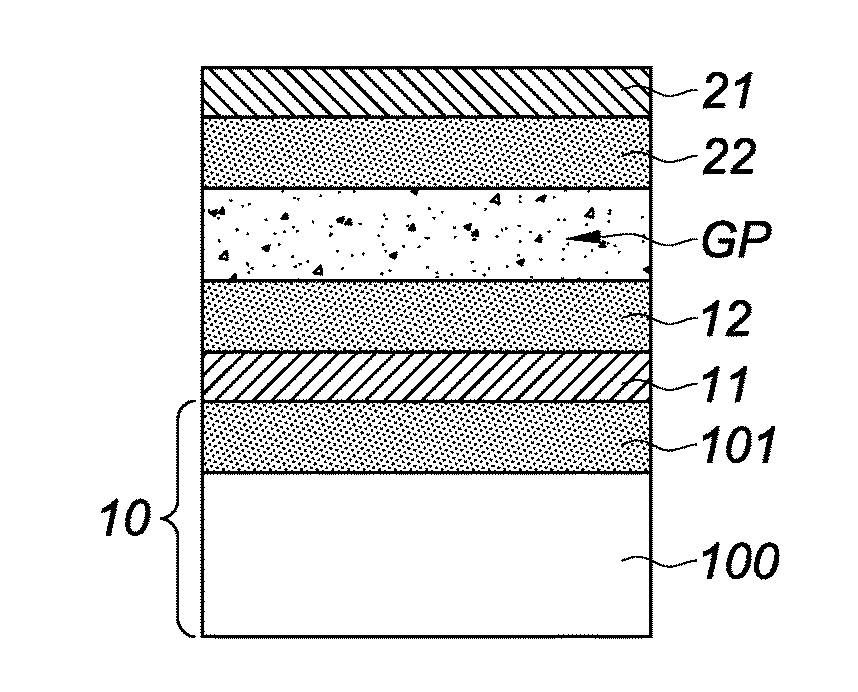Fabrication method of a stack of electronic devices
a technology of electronic devices and fabrication methods, applied in the direction of basic electric elements, semiconductor/solid-state device manufacturing, electric devices, etc., can solve the problems of poor quality, closed oxide/oxide bonding interface, and state-of-the-art methods are not entirely satisfactory, and achieve good-quality direct bonding
- Summary
- Abstract
- Description
- Claims
- Application Information
AI Technical Summary
Benefits of technology
Problems solved by technology
Method used
Image
Examples
Embodiment Construction
[0047]For the different embodiments, the same reference numerals will be used for parts that are identical or which perform the same function, for the sake of simplification of the description. The technical characteristics described in the following for different embodiments are to be considered either alone or in any technically possible combination.
[0048]The method illustrated in FIGS. 1a to 1d, 2a to 2d, and 3a to 3e is a fabrication method of a stack of electronic devices 11, 21, comprising the following steps:[0049]a) providing a first structure 1 successively comprising a substrate 10, an electronic device 11, a dielectric layer 12, and a first semiconductor layer 13;[0050]b) providing a second structure 2 successively comprising a substrate 20, an active layer 21, a dielectric layer 22, and a second semiconductor layer 23, the active layer 21 being designed to form an electronic device;[0051]c) bonding the first and second structures 1, 2 by direct bonding between the first ...
PUM
 Login to View More
Login to View More Abstract
Description
Claims
Application Information
 Login to View More
Login to View More - R&D
- Intellectual Property
- Life Sciences
- Materials
- Tech Scout
- Unparalleled Data Quality
- Higher Quality Content
- 60% Fewer Hallucinations
Browse by: Latest US Patents, China's latest patents, Technical Efficacy Thesaurus, Application Domain, Technology Topic, Popular Technical Reports.
© 2025 PatSnap. All rights reserved.Legal|Privacy policy|Modern Slavery Act Transparency Statement|Sitemap|About US| Contact US: help@patsnap.com



